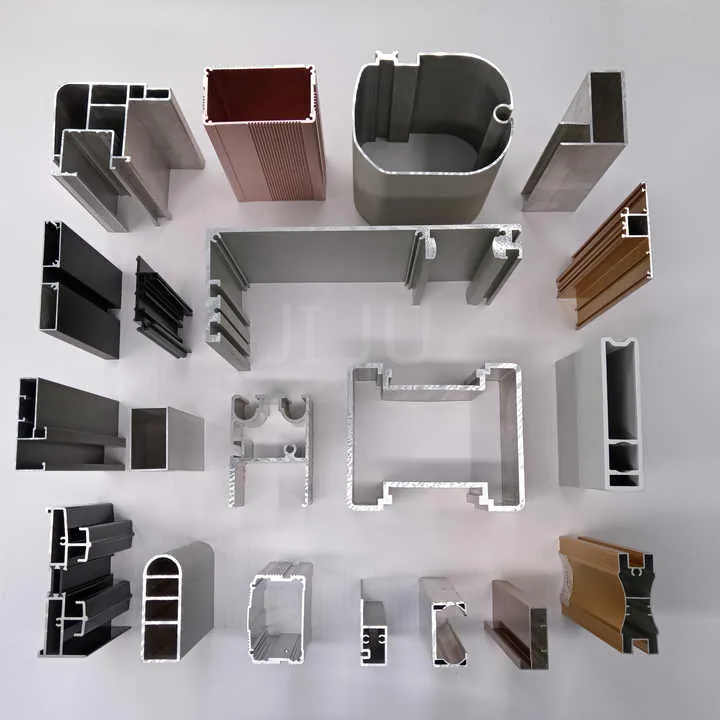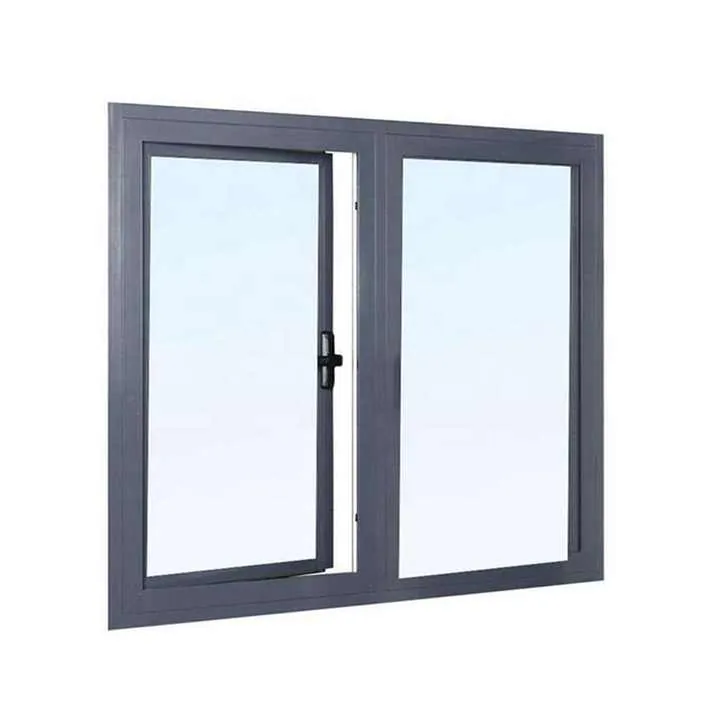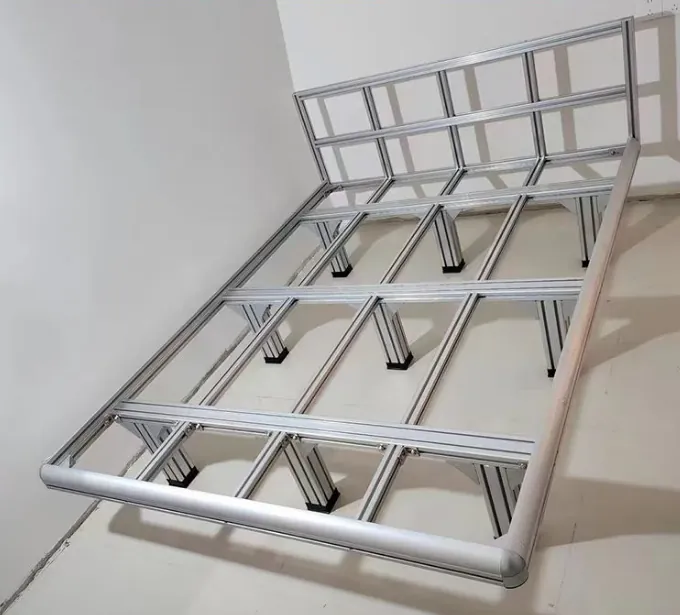What Are Thermally Broken Aluminum Doors and Windows?

Do your aluminum doors and windows feel cold in winter and hot in summer? That’s a sign they’re leaking energy. It’s a common issue that thermally broken systems are designed to solve.
Thermally broken aluminum doors and windows contain an insulating barrier between the interior and exterior aluminum sections, reducing heat transfer and improving energy efficiency.
Most people don’t know this feature exists, but it’s one of the easiest upgrades for better comfort, lower energy bills, and longer-lasting window systems.
How does a thermal break reduce energy loss?
Traditional aluminum windows conduct heat easily, leading to indoor temperature loss. A thermal break interrupts that path.
A thermal break is a non-metal barrier that separates the inner and outer aluminum frames, blocking direct heat flow through the metal.

Aluminum is a metal, and like all metals, it’s a good conductor of heat. Without a break, heat from your warm indoor air can travel straight through the aluminum to the outside—and vice versa in summer.
Here’s how the system works:
1. Metal Separation
A strip of insulating material is inserted between the inner and outer parts of the frame. These two parts no longer touch directly.
2. Heat Path Disruption
By separating the conductive metal path, the break prevents indoor heat from escaping through the frame.
3. Thermal Bridge Elimination
Thermal bridges are areas where heat flows freely. The break eliminates this bridge within the window frame.
4. Condensation Prevention
With less temperature difference across the frame, condensation on the interior side drops significantly.
Energy Comparison Table
| Frame Type | U-Value (Lower is Better) | Risk of Condensation | Energy Efficiency |
|---|---|---|---|
| Non-thermal Aluminum | High (~2.0 W/m2·K) | High | Poor |
| Thermally Broken Aluminum | Low (~1.0–1.5 W/m2·K) | Low | Excellent |
Thermal breaks block the direct transfer of heat through aluminum frames.True
By inserting a non-conductive material between metal sections, heat conduction is interrupted.
Thermal breaks only affect the glass, not the aluminum frame.False
Thermal breaks are placed in the aluminum frame itself to reduce frame-related heat loss.
What materials are used in thermal breaks?
Not all thermal breaks are made the same. The quality and material type affect performance and durability.
Thermal breaks are typically made from polyamide, polyurethane, or PVC—materials with low thermal conductivity and strong mechanical properties.

When I work with customers selecting thermal break systems, I always point out that material choice isn’t just technical—it affects how well the break works in the long run. Poor-quality materials may degrade, warp, or lose their insulating power.
Common Thermal Break Materials:
1. Polyamide (PA66 with glass fiber)
- Most popular
- High thermal resistance
- Strong bonding to aluminum
- Good for large frames or harsh climates
2. Polyurethane (PU)
- Lower cost
- Slightly less rigid than polyamide
- Good for residential doors/windows
3. PVC
- Least common in high-performance systems
- Used in budget applications
- Lower temperature tolerance
Performance Table: Thermal Break Materials
| Material | Thermal Conductivity | Mechanical Strength | Common Use |
|---|---|---|---|
| Polyamide | Very Low | High | Commercial and residential |
| Polyurethane | Low | Medium | Budget residential |
| PVC | Medium | Low | Temporary or low-end windows |
Polyamide thermal breaks offer strong insulation and frame durability.True
Polyamide has excellent thermal and mechanical properties, making it ideal for long-lasting applications.
PVC is the most common material in high-end thermal break systems.False
PVC is used mainly in budget systems due to its lower strength and insulation.
What benefits do thermally broken frames offer?
Customers often ask if thermal breaks are really worth the extra cost. The answer is yes—for multiple reasons.
Thermally broken aluminum doors and windows improve energy efficiency, reduce condensation, boost comfort, and enhance structural performance.

These systems are a long-term investment. I’ve helped property owners cut heating and cooling bills significantly with just this one upgrade. Let’s go through the main advantages:
1. Better Insulation
Lower U-values mean better temperature control indoors. It keeps heat in during winter and out during summer.
2. Energy Savings
Less energy needed for heating and cooling results in noticeable utility savings over time.
3. Reduced Condensation
Thermally broken frames stay warmer on the inside, avoiding dew build-up and water damage.
4. Acoustic Insulation
Some break materials also reduce sound transmission, which is helpful in noisy environments.
5. Improved Strength
Modern thermal break systems maintain structural strength, so large glass panels remain secure.
Benefit Table: Thermally Broken Systems
| Benefit | Description |
|---|---|
| Energy Efficiency | Prevents heat loss/gain through frames |
| Comfort | More consistent indoor temperatures |
| Condensation Control | Prevents moisture and mold |
| Noise Reduction | Blocks external sound |
| Long-term Value | Lower bills, higher resale potential |
Thermally broken windows reduce energy costs over time.True
Better insulation means less energy is needed to heat or cool the building.
Thermal breaks weaken the window frame's structure.False
High-quality thermal breaks are designed to maintain or even enhance frame strength.
How to maintain thermally broken aluminum systems?
High performance doesn’t mean high maintenance. But these systems still need regular care to last.
To maintain thermally broken aluminum doors and windows, keep the frame clean, inspect seals, lubricate hardware, and check for material aging periodically.

I often tell clients: maintenance is easy, but neglect is expensive. Even the best windows degrade faster without care. Thankfully, thermally broken systems are built for durability and only need basic attention.
Key Maintenance Tips:
- Clean Frames Monthly: Use mild soap and water. Avoid harsh chemicals.
- Inspect Seals Quarterly: Damaged seals can lead to energy loss.
- Lubricate Moving Parts: Hinges, locks, and sliders should move freely.
- Check for Cracks or Warping: Especially in older units or extreme climates.
- Repaint or Re-coat (if needed): For anodized or powder-coated surfaces.
Maintenance Schedule Table
| Task | Frequency | Tools Needed |
|---|---|---|
| Frame cleaning | Monthly | Soft cloth, soap |
| Seal inspection | Quarterly | Visual check |
| Hardware lubrication | Biannually | Silicone spray or oil |
| Surface touch-up | As needed | Matching finish product |
Thermally broken aluminum windows require regular inspection and occasional cleaning.True
Proper maintenance ensures continued insulation and performance.
These systems are maintenance-free and never need checking.False
All window systems, including thermal breaks, require basic care to stay efficient.
Conclusion
Thermally broken aluminum doors and windows provide real energy savings, better comfort, and longer-lasting performance. By understanding their design, materials, and care requirements, you can make informed decisions and enjoy the full benefits of this advanced framing technology.



